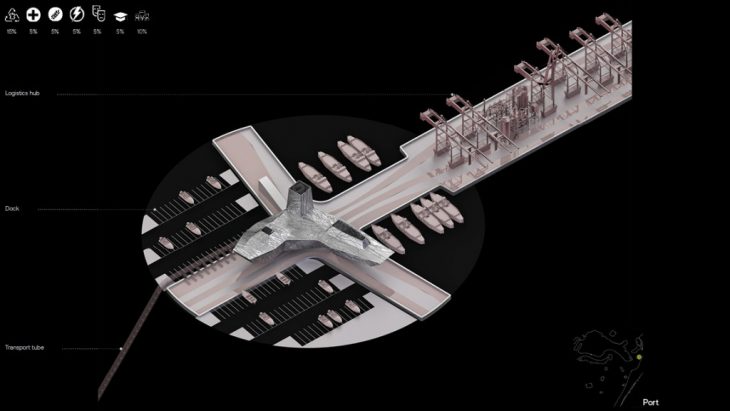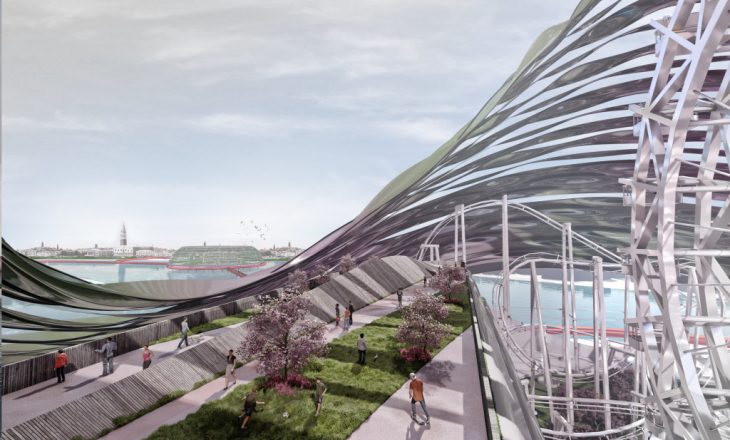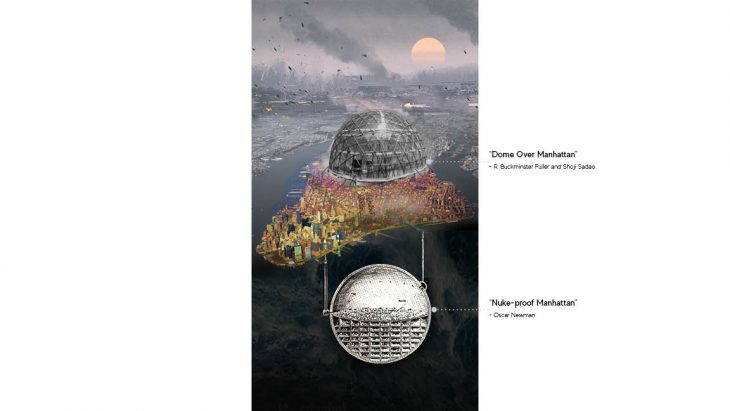The hypothesis is that the shift of paradigms that this new conceptual space requires is emancipating us from the notion of “generic information” in order to move us towards a field characterised by paying big attention to the very “specific experience”. A specificity that is being developed in an hyperexpanded present, in which past and future have collapsed and blurred our capacity to think beyond the present. Facing this theoretical frame with a very specific phenomenon:Climate Emergency. Even more specifically: the rise of the water level and its clash with the urbs. We will analyse Island Cities as relevant case studies, on the one side we will explore how to design Island Cities, and on the other side we will apply this formal research to a real case study: Venice.
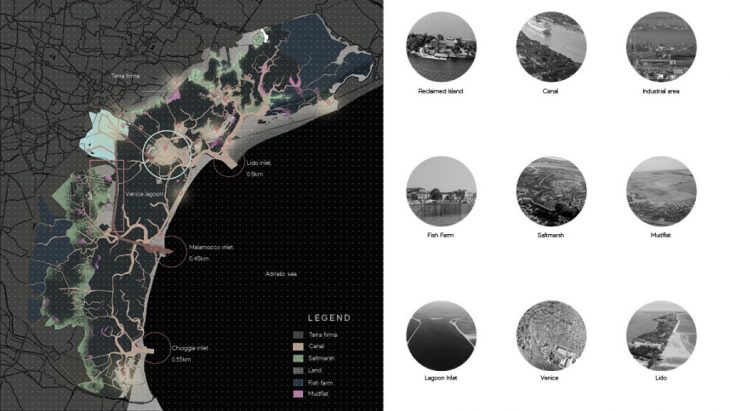
How do we rethink a city for mass consumption…

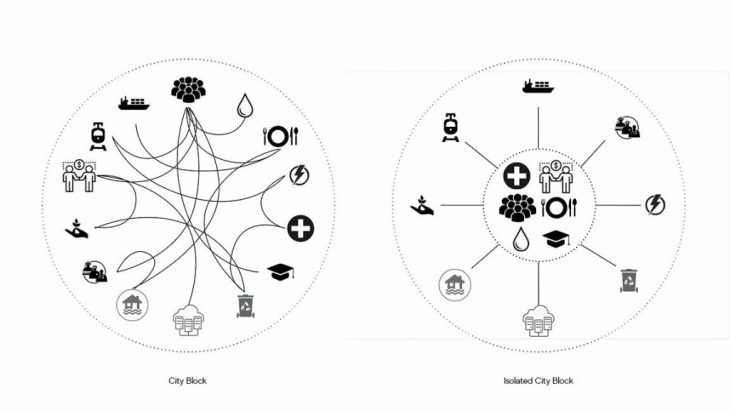
</p>
Master Plan
The city gave us the opportunity to design not only new urban tactics but architectural projects, paying close attention to emergent design processes associated with Data Collection, System Optimisation with Genetic Algorithms,Permutation of solutions through Parametric Systems and Generative Systems Design Language.
The proposal was thought as a supporting infrastructure floating in the lagoon between the Venice mainland and Lido.The primary phase is a new port terminal which stops the damage caused by the entry of the bigger ships in the lagoon.Soon a network was established which was a node based network to suffice the deficit caused by the mass consumption of Venice as a public space.The bathymetry was studied in order to plan the built mass. The second aspect was the shortest paths where we studied various activities in the existing island and the mainland. In this way the new network responds to the existing infrastructure. This then helped us to define a hierarchy and positioning of various blocks in the network.
</p>
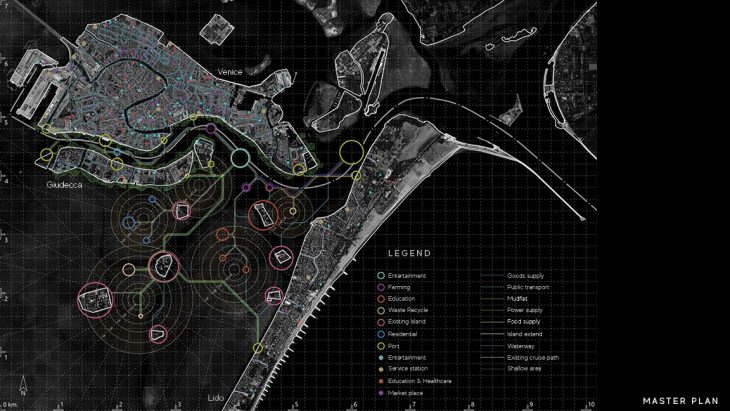
An urban catalogue was developed in order to make floating self-sufficient blocks which were imagined as isolated city blocks. This would make the proposed network capable to grow and disintegrate as with time and consumption.
Mud flats are proposed on the periphery of the existing island. These are dry lines that mimic the function of the existing mud flats that control the tidal fluctuations.
The aim of the project is to reduce the process of sinking of the existing island and to create another layer for human interaction.This also is a co-existing layer that helps the users to spectate the venitian island.
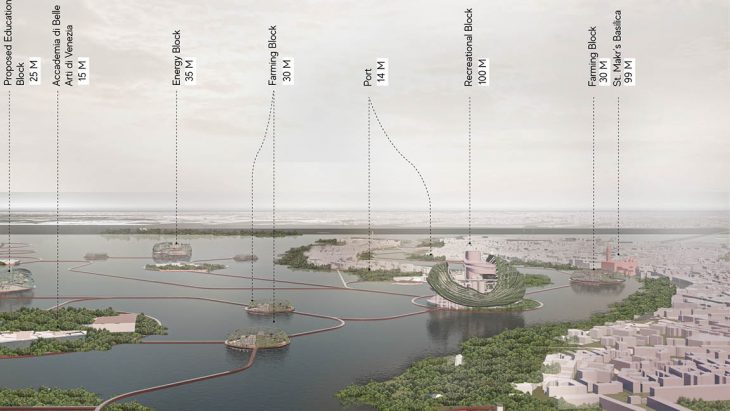
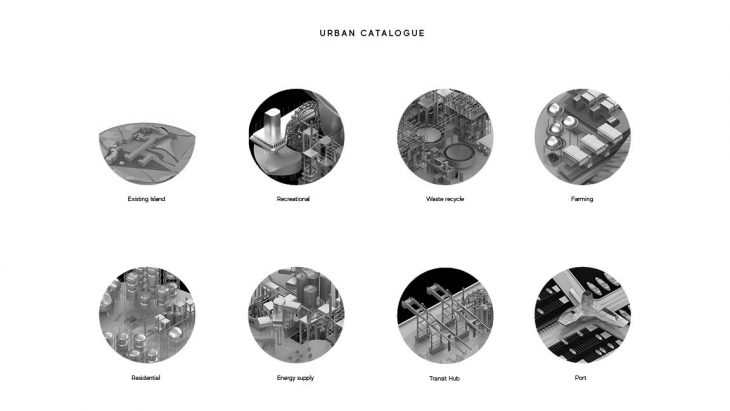
Existing Island
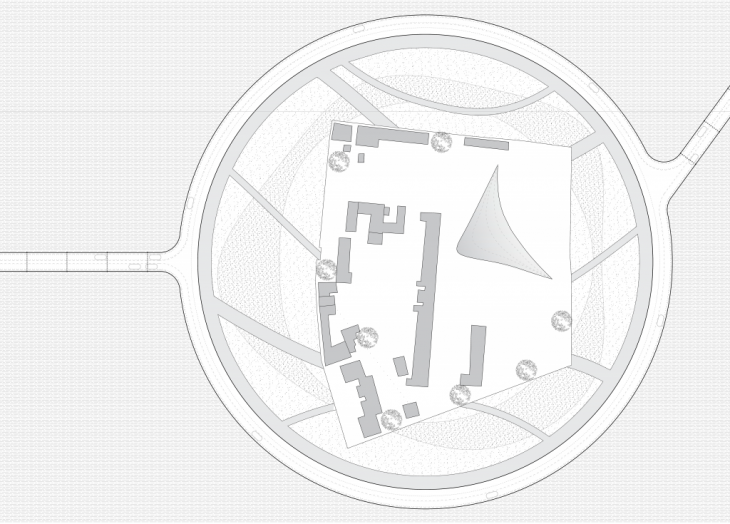
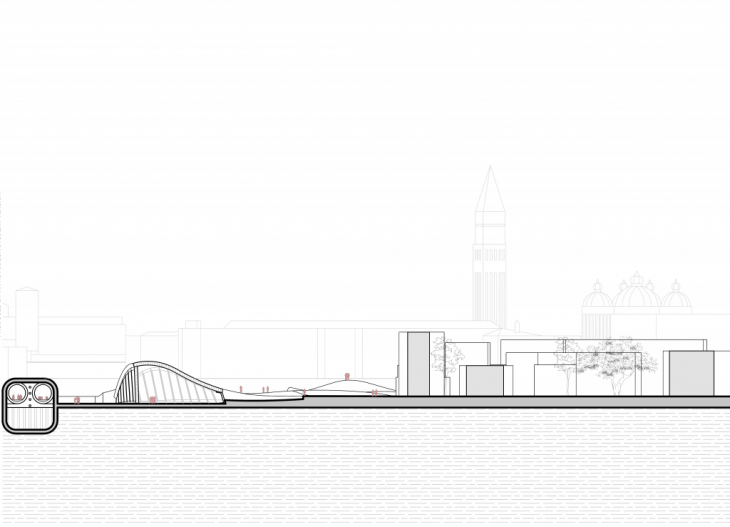
Recreational Block
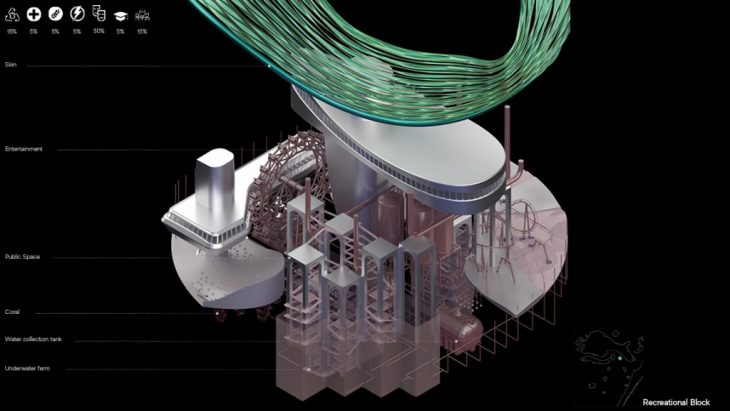
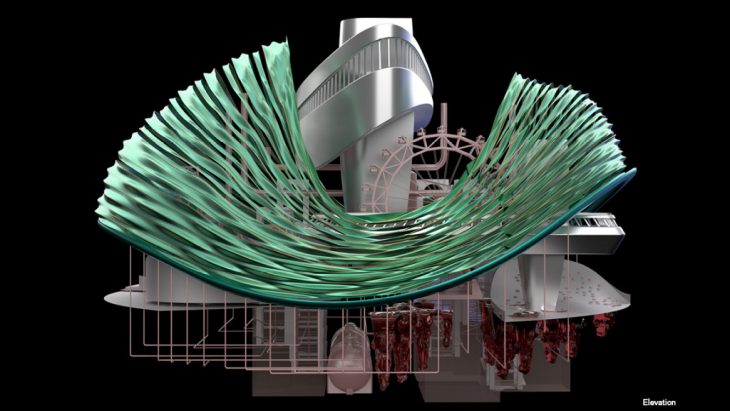
Waste Recycle Block
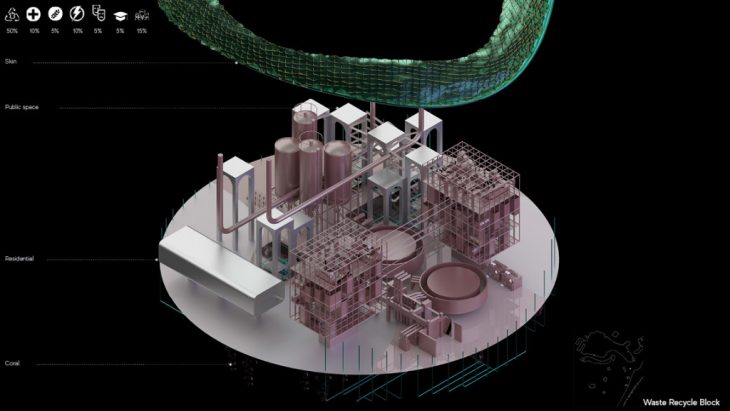
Farming Block

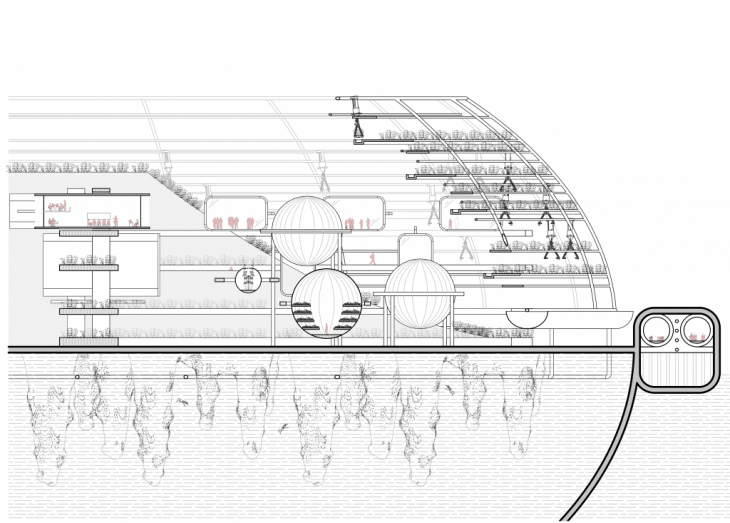
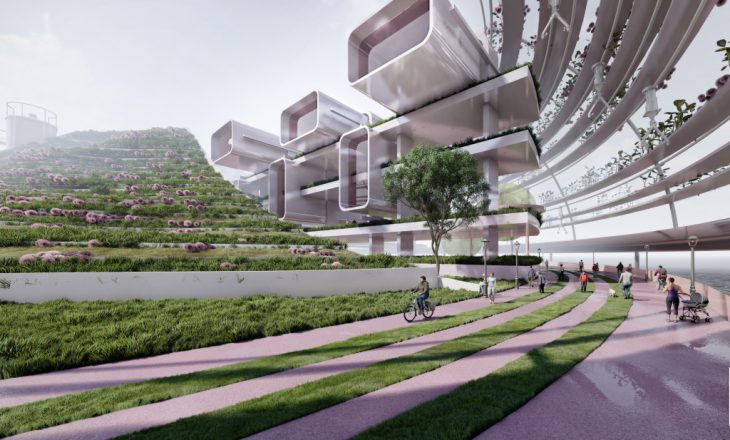
Residential Block
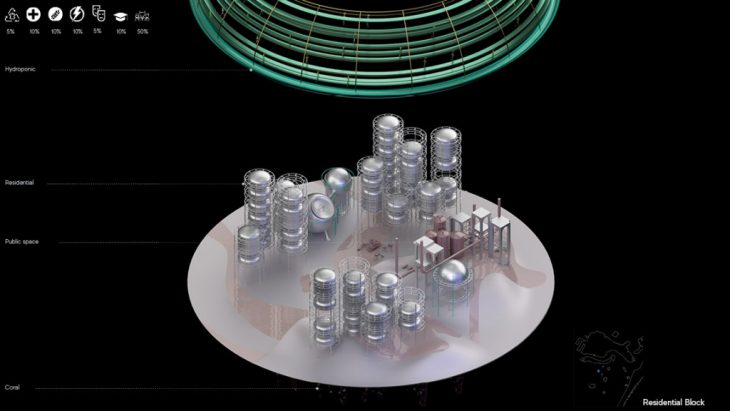
Energy Supply Block
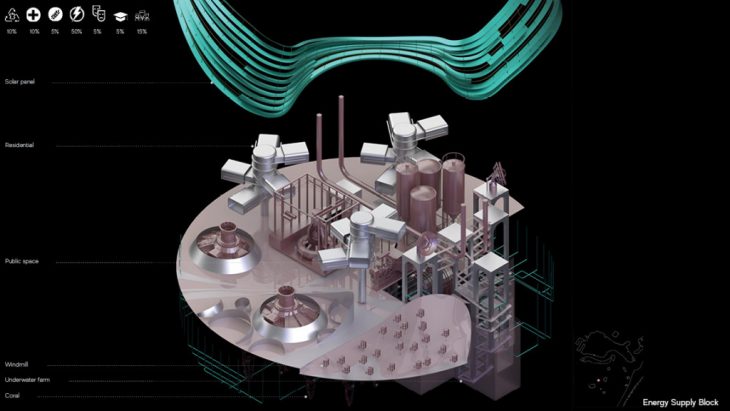
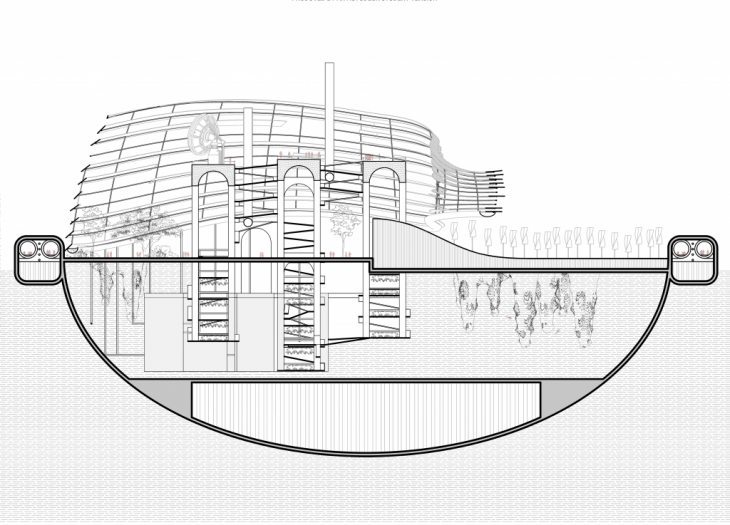
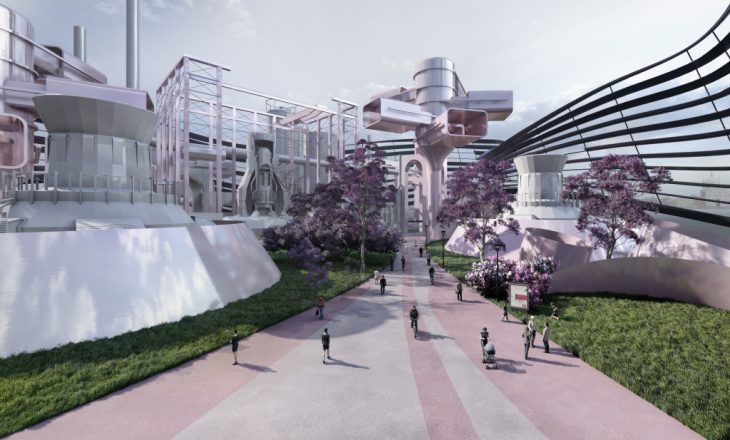
Transit Hub
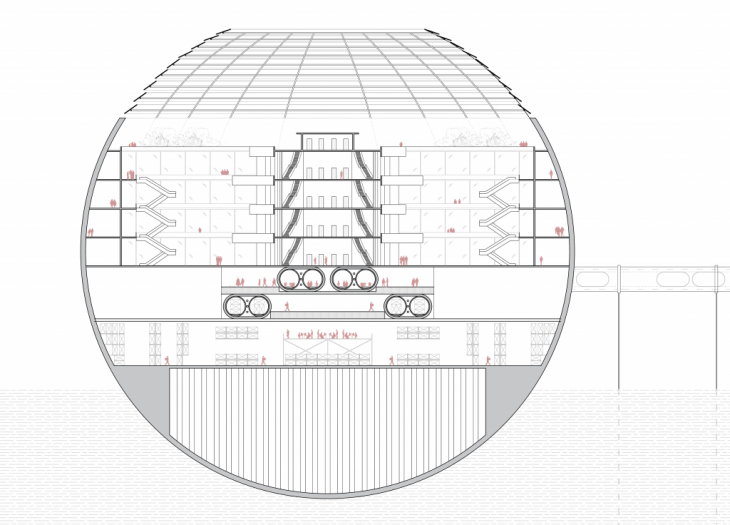
New Port
